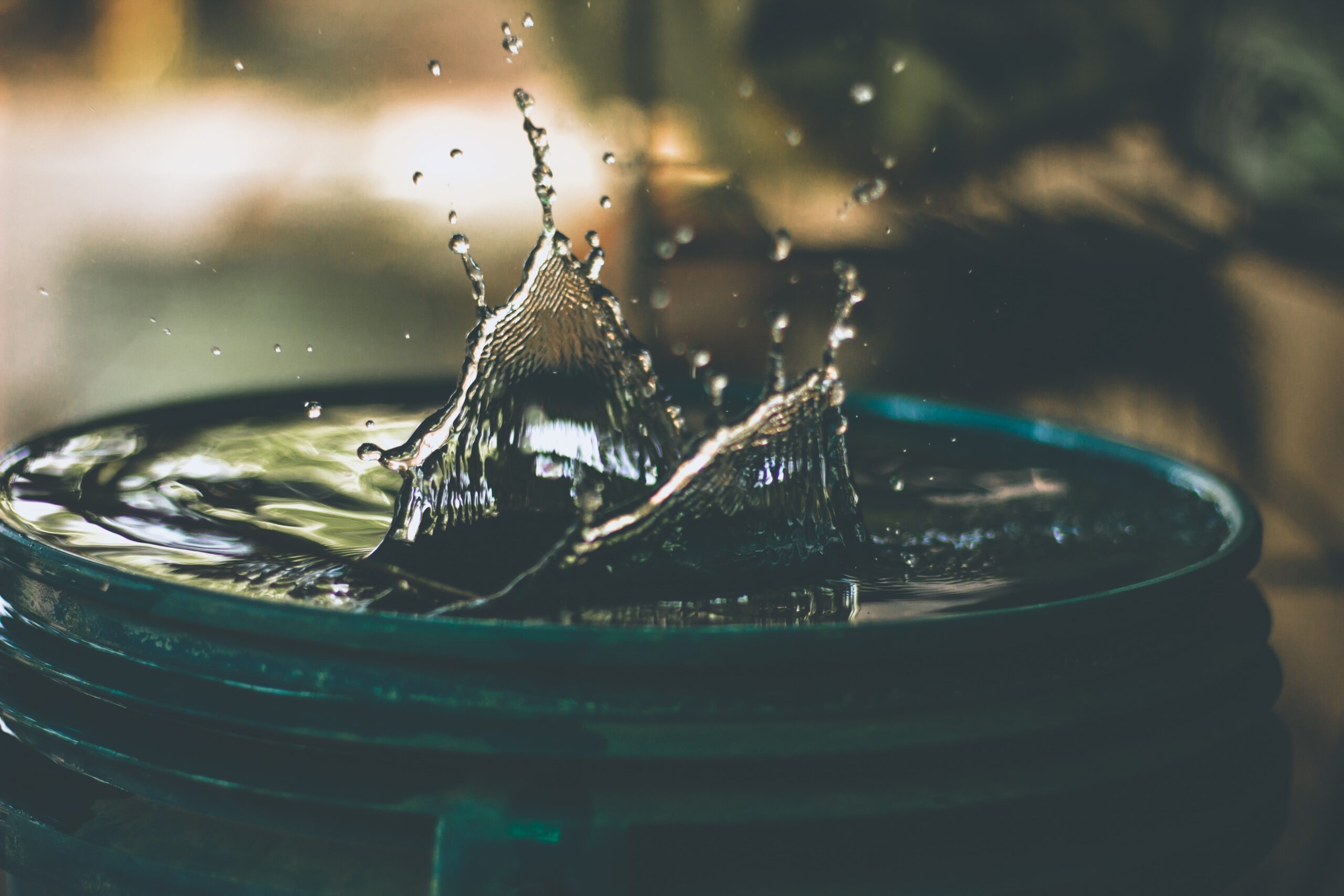If you find yourself facing the challenge of maintaining well water with high levels of dichloromethane, you may be wondering where to even begin. The presence of this chemical can be concerning, but fear not, because there are steps you can take to ensure the safety and quality of your water. In this article, we will explore some effective methods and strategies for tackling this issue head-on. By the end, you will have a clearer understanding of how to maintain your well water and mitigate the impact of dichloromethane on your health and the environment.

Understanding Dichloromethane in Well Water
What is dichloromethane?
Dichloromethane, also known as methylene chloride, is a colorless liquid with a sweet odor. It is a volatile organic compound (VOC) that can be found in well water due to various sources. Dichloromethane is commonly used as a solvent in industrial processes, paint strippers, metal cleaners, and degreasers.
Sources of dichloromethane in well water
There are several potential sources of dichloromethane contamination in well water. Industrial activities, such as manufacturing facilities, can release dichloromethane into the environment through improper disposal or accidental spills. Agricultural activities, including the use of certain pesticides or herbicides, may also contribute to the presence of dichloromethane in well water. Additionally, household products like paint thinners, automotive cleaners, and adhesives containing dichloromethane can find their way into groundwater.
Health risks associated with dichloromethane
Exposure to high levels of dichloromethane in drinking water can pose health risks. Short-term exposure may cause dizziness, nausea, headaches, and irritation of the eyes and respiratory tract. Prolonged exposure can lead to liver and kidney damage, as well as increased risks of cancer. Pregnant women and individuals with compromised immune systems are particularly vulnerable to the adverse effects of dichloromethane.
Legal limits for dichloromethane in drinking water
To ensure safe consumption, regulatory agencies have established legal limits for dichloromethane in drinking water. In the United States, the Environmental Protection Agency (EPA) has set a maximum contaminant level (MCL) of 5 parts per billion (ppb) for dichloromethane in public water systems. However, it is crucial to note that private well owners are responsible for testing and maintaining the quality of their own water, as these regulations may not apply to them.
Identifying High Levels of Dichloromethane
Testing well water for dichloromethane
To identify the presence of dichloromethane in well water, it is important to conduct regular testing. Sampling kits specifically designed to detect VOCs, including dichloromethane, are available for homeowners. You can collect a water sample directly from your well and send it to a certified laboratory for analysis. Follow the instructions provided with the testing kit carefully to ensure accurate results.
Interpreting dichloromethane test results
Once you receive the test results, it is essential to understand how to interpret them. The laboratory will provide you with the concentration of dichloromethane in your well water, usually measured in parts per billion (ppb). Compare this result with the legal limits established by regulatory agencies. If the concentration exceeds the permissible limit, immediate action should be taken to address the issue.
Potential Sources and Contamination Prevention
Identifying potential sources of dichloromethane contamination
To prevent dichloromethane contamination in well water, it is crucial to identify potential sources in your vicinity. Assess nearby industrial facilities, agricultural activities, and households that may utilize or produce products containing dichloromethane. Engaging with your community and local environmental agencies can help gather information about potential contaminating sources.
Preventing dichloromethane contamination in well water
Prevention is key to ensuring the quality of well water. Implementing best practices can significantly reduce the risk of dichloromethane contamination. Avoid using or storing products containing dichloromethane near your well. Properly dispose of hazardous household chemicals through designated collection sites. If you suspect nearby activities may contribute to contamination, consider installing a protective barrier around your well or relocating it if feasible.
Water Treatment Options
Activated carbon filtration
Activated carbon filtration is a common method used to remove dichloromethane from water. This treatment process involves passing well water through filters containing activated carbon, which adsorbs the contaminants. Activated carbon filters are available in different forms, including cartridge filters, granular activated carbon beds, and whole-house systems. Regular maintenance, such as replacing carbon filters according to manufacturer recommendations, is essential to ensure the effectiveness of this treatment method.
Reverse osmosis
Reverse osmosis is an effective water treatment technology for removing dichloromethane from well water. Water is forced through a semipermeable membrane, trapping contaminants and allowing purified water to pass through. Reverse osmosis systems are typically installed under the sink or as point-of-entry systems. Regular filter replacement and system maintenance are necessary to optimize the performance of reverse osmosis systems.
Distillation
Distillation is a water treatment method that involves heating the well water to produce steam, which is then condensed back into liquid form. As dichloromethane has a lower boiling point than water, it can be effectively removed through this process. However, distillation can be energy-intensive and may not be suitable for large quantities of water. Proper maintenance of distillation equipment is vital to ensure efficient and safe operation.
Air stripping
Air stripping is a technique that utilizes air or a stripping gas, such as nitrogen, to remove volatile contaminants like dichloromethane from water. This process involves passing the water through towers or packed columns, where volatile compounds evaporate into the air or stripping gas. Air stripping may require careful consideration of system design, airflow rates, and temperature control to achieve optimal results. Consultation with water treatment professionals is recommended for implementing air stripping systems.

Maintaining Well System and Water Quality
Regular well inspections
Regular inspections of your well system can help identify potential issues that may lead to dichloromethane contamination. Conduct visual inspections to ensure the integrity of the well casing, seals, and caps. Check for any signs of corrosion or damage that could compromise the well system’s integrity. Consulting a professional well inspector can provide a comprehensive assessment of your well’s condition.
Maintaining proper well construction
Proper well construction plays a significant role in preventing contamination. Ensure that your well meets local well construction standards and codes. Regularly inspect and maintain the well cap to prevent the entry of surface water and potential contaminants. If you observe any issues with your well’s construction, consult a licensed well contractor for necessary repairs or modifications.
Monitoring and maintaining well water pH levels
Monitoring the pH levels of your well water is essential for maintaining water quality. Dichloromethane tends to be more volatile and easily evaporate in acidic environments. Therefore, monitoring and maintaining a pH level of 7 or slightly above can help minimize the presence of dichloromethane. Regular testing using a pH testing kit can be done at home or through a certified laboratory for more accurate results.
Proper well disinfection techniques
Regular well disinfection is necessary to prevent bacterial and viral contamination, which can indirectly impact dichloromethane levels. Follow proper disinfection techniques recommended by certified professionals or local health departments. These techniques may involve chlorination or other suitable treatment methods. It is crucial to adhere to the recommended disinfection frequency and guidelines for the volume of water in your well.
Monitoring and maintaining appropriate water pressure
Appropriate water pressure is essential for the efficient functioning of your well system and to minimize the risk of contamination. Monitor and maintain a consistent water pressure level within the range recommended by the well manufacturer. Fluctuating or excessively high water pressure can lead to leaks or breaches in the well system, potentially introducing contaminants. Regularly check and adjust the pressure tank as needed.
Safety Precautions
Using personal protective equipment
When handling dichloromethane or other potentially hazardous substances, it is crucial to use personal protective equipment (PPE) to minimize exposure risks. This may include wearing gloves, safety goggles, and a respirator or mask depending on the situation. Follow the manufacturer’s instructions or consult safety guidelines for the appropriate type of PPE required for handling dichloromethane safely.
Proper disposal of contaminated water and filters
If you encounter contaminated water or filters during the treatment process, it is essential to dispose of them properly. Contact your local environmental agency or waste management facility to inquire about the appropriate methods for disposing of dichloromethane-contaminated materials. Avoid pouring contaminated water down drains or into the ground, as this can contribute to further environmental pollution.
Following safety guidelines for handling dichloromethane
When using or storing products that contain dichloromethane, it is vital to follow the safety guidelines provided by the manufacturer. Keep such products in well-ventilated areas away from ignition sources. Avoid contact with skin and eyes, and refrain from inhaling the fumes. If accidental spills occur, promptly clean them up using absorbent materials and dispose of them properly.

Professional Assistance and Regulations
Consulting water treatment professionals
Seeking assistance from water treatment professionals can provide valuable guidance in addressing dichloromethane contamination issues. These professionals can assess your well water quality, recommend appropriate treatment options, and help with the installation and maintenance of water treatment systems. Ensure that you engage with certified and experienced professionals to ensure optimal results.
Understanding national and local regulations
Familiarize yourself with national and local regulations pertaining to well water quality and dichloromethane contamination. Understanding these regulations will help you determine your responsibilities as a well owner. Local health or environmental agencies can provide information on the applicable regulations in your area and offer guidance on compliance measures.
Seeking guidance from health or environmental agencies
If you have concerns or questions regarding the health effects of dichloromethane or other water-related issues, seek guidance from health or environmental agencies. These agencies can provide valuable information, resources, and support regarding well water safety, testing, and maintenance. Stay informed about the latest research and recommendations to make informed decisions about the well-being of your well water.
Education and Awareness
Educating yourself about well water maintenance
Taking the initiative to educate yourself about well water maintenance is crucial for ensuring the quality and safety of your water. Stay informed about best practices, the latest research, and emerging technologies in well water treatment and contamination prevention. Utilize reputable sources such as government agencies, scientific publications, and trusted educational websites to enhance your knowledge.
Sharing information with neighbors and community
Raise awareness about well water safety and the potential risks associated with dichloromethane contamination by sharing information with your neighbors and community. Organize community workshops, discussions, or information sessions to educate others about maintaining well water quality. By fostering a sense of community involvement, everyone can contribute to a healthier and safer water supply.
Promoting well water safety and testing awareness
Encourage well owners and community members to prioritize well water safety by promoting awareness campaigns. Distribute informational brochures or pamphlets about the importance of regular testing, potential contamination sources, and available treatment options. Collaborate with local health departments, environmental organizations, or schools to reach a broader audience and foster a culture of well water safety.

Monitoring and Regular Testing
Establishing a testing schedule
Developing a testing schedule is essential for monitoring the quality of your well water. Regular testing can identify potential contamination issues before they become severe. Consider testing your well water annually or as recommended by local regulations and professionals. Additionally, testing after any changes in land use, nearby construction, or suspicious activities can provide valuable insights.
Monitoring well water quality parameters
In addition to testing for dichloromethane, monitoring other water quality parameters is crucial for a comprehensive assessment of your well water. Test for indicators such as pH, turbidity, total dissolved solids (TDS), and bacterial or viral contaminants. Water quality test kits or certified laboratories can provide accurate results for these parameters. Regular monitoring allows you to identify trends or changes in water quality.
Regularly testing for dichloromethane levels
Continuously testing for dichloromethane levels is essential, particularly if your well water has previously shown signs of contamination or if potential sources are nearby. Regular testing can help in early detection and prompt action to mitigate the risks associated with dichloromethane exposure. Consult certified laboratories or water treatment professionals to ensure accurate and reliable test results.
Alternate Water Sources
Considering alternative water sources
If high levels of dichloromethane persist in your well water despite treatment efforts, it may be necessary to consider alternative water sources. Explore options such as connecting to a public water supply, drilling a new well in a different location, or utilizing rainwater harvesting systems. Assess the feasibility and water quality of alternative sources before making any decisions. Consult with professionals to determine the best solution for your specific situation.
Water treatment options for alternative sources
When utilizing alternative water sources, it is crucial to implement appropriate water treatment measures. Depending on the source and intended use, treatment options such as activated carbon filtration, UV disinfection, or reverse osmosis can be employed to remove potential contaminants. Consult with water treatment professionals to design and install an effective treatment system tailored to your alternative water source.
By understanding dichloromethane, identifying high levels, preventing contamination, utilizing water treatment options, maintaining well systems, and implementing safety precautions, you can ensure the safety and quality of your well water. By spreading awareness, seeking professional assistance, and monitoring water quality regularly, you contribute to a healthier environment and promote the well-being of your community.


